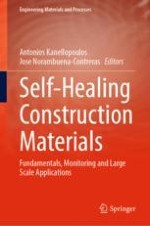This book provides a thorough overview of all techniques for producing self-healing construction materials. Construction materials (cement-based, bituminous, metals, and alloys) are prone to cracking, which with the progress of time can lead to compromising of the structural integrity of critical infrastructure. Self-healing materials form a new class of materials that have inbuilt engineered properties to counteract damage and repair it before it becomes critical. The methods for monitoring, modeling, and assessing self-healing are also reviewed. The final section of the book discusses the future outlook and potential extension of self-healing concepts to other materials (e.g., heritage structures and soils).
